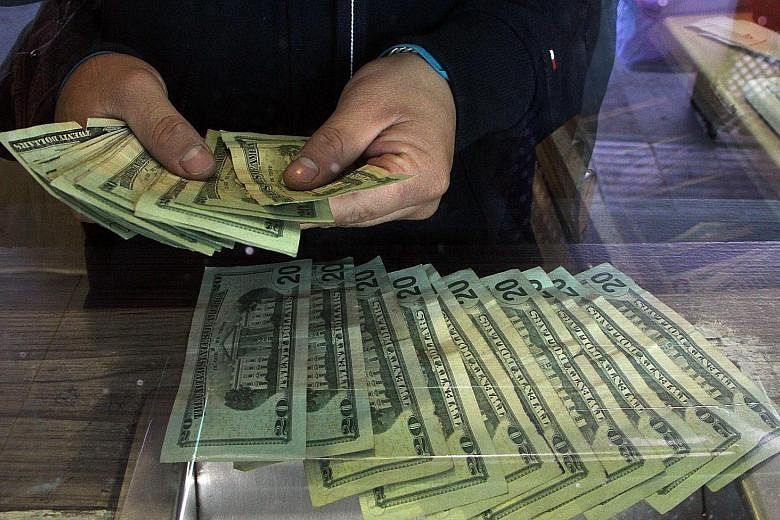LONDON • The US dollar could recover only a little ground yesterday, after recording its worst start to the year in three decades due to concerns that the United States was poised to ditch a two-decade-old "strong dollar" policy.
The greenback skidded 2.6 per cent against a basket of major currencies in January, its worst showing since 1987, falling first on worries over US President Donald Trump's protectionism, and then on mounting concerns that the new administration was set on talking down the currency.
Those fears had escalated on Tuesday, when a senior trade adviser to the president, Mr Peter Navarro, said the euro was "grossly undervalued", sending the euro soaring above US$1.08 for the first time since early December, and knocking the US dollar index down almost 1 per cent to a seven-week low.
Mr Navarro's comment was followed by Mr Trump's remark that "every other country lives on devaluation" while the United States sits there, " like a bunch of dummies".
Commerzbank currency strategist Esther Reichelt said: "So far, he's clearly following through with his politics - there might be some nervousness about him taking decisions that nobody expected he would actually do.
"So there might be some kind of fear that he might actually try to order interventions and to go into confrontation with the Fed on this issue."
Ms Reichelt added that currency markets would be relatively calm yesterday, ahead of the conclusion of the US Federal Reserve's latest policy meeting, though the meeting has been relegated to the sidelines with Mr Trump grabbing much of the headlines.
The Fed is expected to keep interest rates unchanged in its first policy decision since Mr Trump took office, as the central bank - along with the market - awaits greater clarity on his economic policies.
The lack of clarity over Mr Trump's promised fiscal stimulus has been another factor that has weakened the US dollar since the start of the year.
It had earlier hit 14-year highs on the view that his policies would boost growth and inflation, leading to a faster pace of interest rate hikes.
However, it has fallen over 4 per cent since, and is now trading less than 2 per cent above its levels before Mr Trump's election.
The US dollar index inched up just 0.1 per cent yesterday, staying below 100 and close to the previous day's lows, while the euro traded flat on the day just below US$1.08.
Against the yen, though, the US dollar was half a per cent higher at 113.40 yen. It was trading at 1.41 against the Singdollar.
Despite Tuesday's comments, which increased the prospect of Washington reversing the "strong dollar" policy advocated by presidents dating back to the Clinton administration, the US currency still attracted demand.
"Mr Trump is providing an opportunity for bargain hunters. The US dollar ends up being sold on his statements, but ultimately it finds downside support as Treasury yields do not fall that much," said Brown Brothers Harriman currency strategist Masashi Murata.
REUTERS

